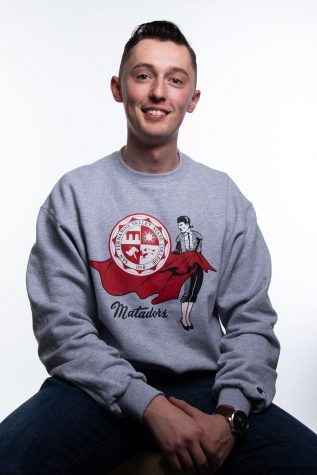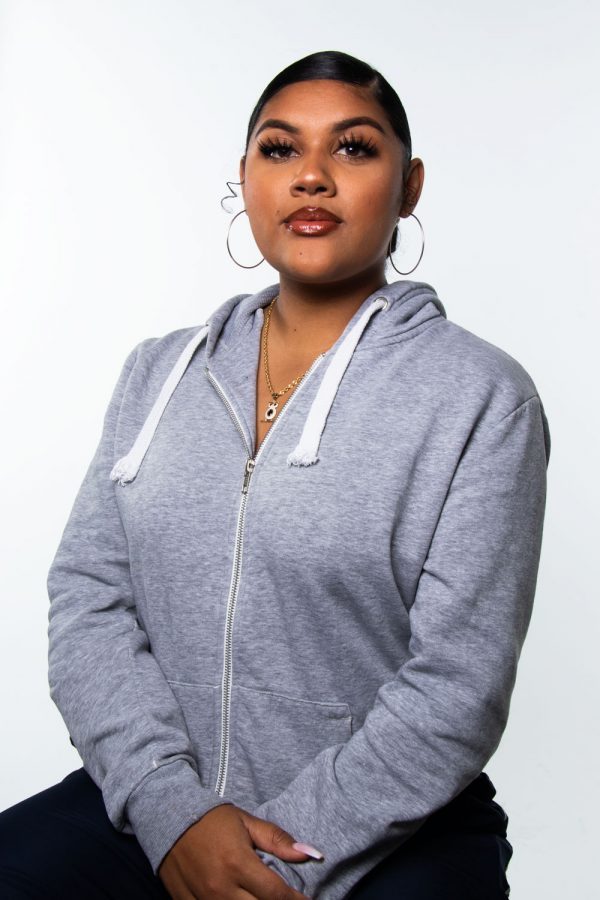Why Students Join the Military
Raquelle “Rocky”’ Holloway, current CSUN junior and future Navy service member.
February 21, 2020
The military is composed of 2.2 billion men and women, according to the Council of Foreign Relations. The reasons they join the military varies, whether it’s to serve their country, participating in Reserve Officers’ Training Corps since high school or college, or upholding a family legacy.
For CSUN students Raquelle “Rocky”’ Holloway and Johnathan Goldenberg, joining the Navy and Army Reserves means more than receiving the financial benefits. For them, it’s about serving their country, their family and getting closer to where they see themselves down the line, as someone who can make a difference.
Holloway is currently a third year student studying public health who, after graduating, will join the Navy and train to become a medical officer once she gets into a physician assistant program where she’ll work in hospitals.
As of 2016, the Veterans Benefits Administration spent $65 billion dollars on about 1.6 million beneficiaries since the Post-9/11 G.I. Bill was enacted in 2009 to extend educational benefits to service members on active duty after 9/11. Beneficiaries include service members and their spouses and families, according to a report under the Congress Budget Office.
The G.I. Bill offers educational benefits for former and current service members pursuing higher education, which offers a housing allowance, full tuition for public colleges of their choice, books and supplies and other expenses.
Goldenberg is currently a marine reservist stationed in Quantico, Virgina, undergoing training to become an artillery officer. Goldenberg graduated from CSUN in 2017 with a bachelors in economics and will complete his masters in political science with an emphasis in campaign theory. His goal is to go to law school and be a part of legislative work.
Holloway became interested in the armed forces as a part of ROTC in high school, originally wanting to become a police officer\; however, a family tree project showed her grandparents’ service in the Navy and that convinced her.
She said that she would grow up seeing pictures and hearing stories of her grandparents. But even though they joined to fight for their country, because they were men of color, they weren’t being put to use or in battle, as she puts it. Instead, they were predominantly in the kitchen or as cleanup crew, which Holloway said was hard for them.
“To know that I can go in for my generation and to know that I can fight but I can also be someone who saves lives as a medical officer, that’s brave, that’s badass to me,” said Holloway.
She said she’s been meeting with her recruiting officer to stay on track with the requirements, and as her time to apply slowly approaches, Holloway said it’s nerve wracking.
“You get stripped from your family, you learn how to be an officer, it makes me nervous,” said Holloway. But their support, especially from her mother knowing she is brave to go off and be independent from them, is what encourages her the most. “They’re my people.”
Goldenberg has the same support from his family, though he said his parents were fearful at first. His parents are religious refugees from Russia, who saw their soldiers being abused and after hearing his desire to join the military, they were scared. But during his year and half in training, he’s been able to tell them of the experience, of the culture and the community he found.

Jonathan Goldberg, 2017 CSUN alumni and current marine reservist stationed in Quantico, Virgina. He is undergoing training to become an artillery officer.
“I hope I’m making my family proud, I like being the representative of the family out there,” said Goldenberg.
In high school, Goldenberg also did a family tree project where he learned how his parents were able to come to the U.S. in 1990. It clicked for him he said, that the U.S. was able to demand their release, which came from a position of strength.
“I realized in the ’80s someone had volunteered to serve the military to make our country stronger, which made it possible for my parents to move to the U.S. It felt like I probably owe it to someone else for me to be able to step up and volunteer,” said Goldenberg.
During his undergrad, Goldenberg was a part of multiple campaign efforts, most notably for Hilary’s campaign in 2016. It was during the season that he met a student in the Army reserves and showed him that he could actually pull it off.
Ever since he was a kid he thought it would be cool to join, and the feeling remained in the back of his head, just like how Holloway felt once she started CSUN — to be a part of something bigger. With time and advice, they made their decision to commit.
Goldenberg’s commitment is six years, not including the year and half he has already done with training. As a former AS president from 2017 to 2018 when he was getting his masters, he has a sense of leadership but sees the greater challenge in becoming the officer responsible for a group of people between ages 18 to 40, to be their resource and role model.
He said that the military has changed him a lot to be more of a professional and driven adult. His experience in representing a student body motivates him to do the same on a bigger scale in his career in politics. Even his tactics in campaigning, going out to different communities to create larger communities coming together for a common cause and using their political voice, have contributed to his drive to work with the people.
Holloway will be a part of the push-back from women and women of color joining the armed forces as the numbers keep rising. According to a quarterly report from the U.S. Navy, women make up 20% of the Navy, and women of color make up even less, with those of mixed race making up only 8%. Holloway’s background of Filipino, Spanish and African American adds to that 8%.
“In the past couple of years we’ve seen that push, but it’s still like men outnumber women in every department so to not only be a woman of color and a woman in general but a woman who’s going to be a doctor, that’s something to me, that’s everything to me,” Holloway said. “I’m proud to say it, you know. Breaking barriers, I’m all for it.”
Goldenberg shared that one day at his base, he ran into someone vaguely familiar — a CSUN alumni who he used to be in a sports club with, now a sergeant. He thought, “What’s he doing here in Virginia?” But he’s come to see that the CSUN community extends beyond the Valley. CSUN’s student veteran population is around 700.
For anyone thinking about joining the armed forces, Holloway and Goldenberg advise them to do the research, to know what they will be getting themselves into and if it feels right for them, just do it.


